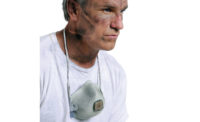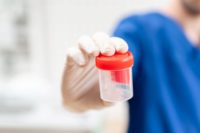What are the big headlines in the respiratory protection world this year? Here are three areas safety and health professionals are watching closely:
- Silica
- Opioid Epidemic Hazards
- New Technology in Safety
Let’s examine each of these in more detail.
Silica
The new OSHA Silica Standard came into effect last fall and it’s estimated that over two million workers are impacted by the silica standard. Employers must be aware/knowledgeable of their site dust levels and have appropriate measures in place for the level and for the likely exposure times. Measures include: dust controls and safer work methods and use of respirators when dust controls and safer work methods cannot limit exposures to the permissible Exposure Limit (PEL).
How’s it going so far?
Companies see the value of compliance and genuinely want to protect their staff. It has been reported that there have been 116 citations in the first six months, with the most common citation relating to failure to do air/exposure monitoring. That’s not surprising -- monitoring being the first step in the OSHA regulation and not a routine check for small to mid-sized companies.
Many companies that had no respiratory program are now working to get hundreds of workers medically tested, trained and fitted for respirators. As a manufacturer of low profile, light weight Powered Air Purifying Respirators (PAPRs) we’re seeing an upsurge of people in the construction and related fields looking at upgrading from negative pressure cartridge respirators and N95s to lightweight and easily deployable PAPRs that provide a higher Applied Protection Factor and save costs in the long run.
The opioid crisis
The number of Americans dying from opioid overdoses continues to rise. The CDC published a recent study that said that in 2016 there were more than 42,000 deaths from opioid overdoes. The most common synthetic opioid responsible for the epidemic is Fentanyl, estimated to be 50-100 times more powerful than heroin. The sheer numbers of overdoses have created a major risk to law enforcement, first responders, hazmat workers and hospital staff who can be frequently exposed to life-threatening doses of opioids.
NIOSH/CDC in a recent publication warned employers and workers to understand their risk for fentanyl exposure and maximize their protection through proper PPE including appropriate respiratory protection. Absorption via inhalation or via mucous membranes of the mouth and nose are believed to be the most likely modes of exposure – wearing gloves, avoiding touching the face and wearing a respirator are recommended by NIOSH/CDC.
Due to the low exposure levels and dangerous/sudden effects (collapse, coma, death), it is critical to wear respiratory protection that fully protects and stops exposure – as even the smallest amount can be life-threatening. Of course, training in the correct use of respiratory protection is imperative. Earlier this year the CDC published a document related to the Fentanyl risks and PPE. The report provides an outline of safety procedures, training, PPE and a detailed chart about respiratory protection.
In low risk situations staff is advised to use disposable N100, R100, or P100 products. For high risk scenarios - longer exposure, higher concentrations or situations where the exposure is unknown, guidelines call for high protection solutions such as PAPRs or even SCBA. Concerns with the daily risk to Fentanyl exposure for emergency staff, hospitals and law enforcement agencies are moving to adopt strong PPE practices including PAPRs.
First line responders are far more educated and experienced in opioid overdoses than they were ten years ago. With a number of high profile deaths in their ranks due to accidental exposure, there is a growing awareness of the risk to their own lives while carrying out their jobs in the line of duty. Basic PPE with training and compliance ensures first responders to opioid overdoses are protected.
New technology in workplace safety
Workplace safety has been an industry to experience rapid change in the past 20 years – from training/education, site monitoring, remote and real-time data collection to global-wide adoption of safer work techniques driven by regulation, societal expectations and importantly, improvements in equipment.
What technology should HSE specialists be watching for?
- Air monitoring – improvements in manufacturing has driven down the cost of detectors and personal gas monitors. Connected devices have allowed companies to remotely monitor equipment performance and in some cases the worker himself.
- Clothing – Improvements in fabrics have enabled breathability and improved durability.
- Eyewear – welders shields with improved color differentiation and protection
- Powered respirators – Game-changing designs that dramatically reduce weight and parts and make high protection deployable site wide.
One area in development is the “connected worker” – where sensors enabling data collection are embedded in site equipment and on personnel or PPE and have the potential to create real time monitoring for early warning systems and changes in workplace activities/processes that lead to improved safety and business operations.
Our workers deserve and expect a safe work place. For employers or HSE teams this is not always easy and there can be considerable challenges for compliance and making suitable equipment available. Fortunately, the knowledge base of workplace safety and PPE is growing driven by OSHA, CDC/NIOSH, ISEA, industry and PPE manufacturers. Workplace safety is globalized, driven by large multinationals and an international community of specialists.
Watching the trends is an easy and valuable way for HSE and employers to remain aware and deliver business improvements while keeping their staff safe.



